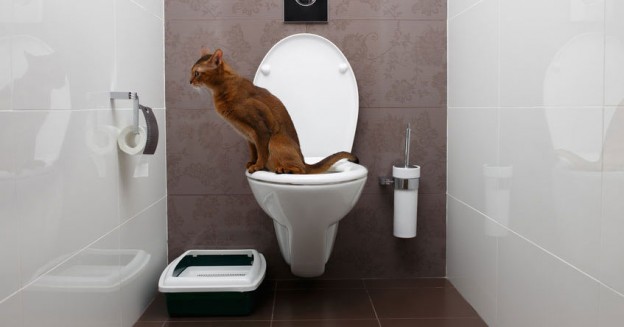We've uncovered this great article about How to Dispose of Cat Poop and Litter Without Plastic Bags listed below on the net and thought it made sense to discuss it with you in this article.

Introduction
As feline owners, it's essential to be mindful of how we get rid of our feline good friends' waste. While it might seem convenient to purge pet cat poop down the bathroom, this method can have harmful effects for both the atmosphere and human health and wellness.
Environmental Impact
Flushing pet cat poop introduces hazardous pathogens and bloodsuckers into the supply of water, posing a considerable danger to marine ecosystems. These impurities can negatively influence aquatic life and compromise water high quality.
Health and wellness Risks
Along with environmental worries, purging pet cat waste can also position health and wellness threats to human beings. Pet cat feces might include Toxoplasma gondii, a bloodsucker that can create toxoplasmosis-- a possibly extreme illness, particularly for pregnant women and people with damaged body immune systems.
Alternatives to Flushing
Thankfully, there are safer and much more responsible means to deal with cat poop. Take into consideration the adhering to options:
1. Scoop and Dispose in Trash
The most usual technique of getting rid of pet cat poop is to scoop it into an eco-friendly bag and throw it in the garbage. Be sure to make use of a devoted clutter scoop and dispose of the waste quickly.
2. Use Biodegradable Litter
Opt for eco-friendly feline litter made from products such as corn or wheat. These litters are eco-friendly and can be securely thrown away in the garbage.
3. Hide in the Yard
If you have a yard, think about burying feline waste in a marked area away from vegetable yards and water resources. Be sure to dig deep sufficient to avoid contamination of groundwater.
4. Mount a Pet Waste Disposal System
Purchase a pet dog waste disposal system especially developed for feline waste. These systems utilize enzymes to break down the waste, minimizing odor and environmental effect.
Final thought
Liable pet ownership expands past supplying food and sanctuary-- it also includes proper waste management. By avoiding purging cat poop down the toilet and selecting different disposal methods, we can reduce our environmental footprint and shield human health and wellness.
Why Can’t I Flush Cat Poop?
It Spreads a Parasite
Cats are frequently infected with a parasite called toxoplasma gondii. The parasite causes an infection called toxoplasmosis. It is usually harmless to cats. The parasite only uses cat poop as a host for its eggs. Otherwise, the cat’s immune system usually keeps the infection at low enough levels to maintain its own health. But it does not stop the develop of eggs. These eggs are tiny and surprisingly tough. They may survive for a year before they begin to grow. But that’s the problem.
Our wastewater system is not designed to deal with toxoplasmosis eggs. Instead, most eggs will flush from your toilet into sewers and wastewater management plants. After the sewage is treated for many other harmful things in it, it is typically released into local rivers, lakes, or oceans. Here, the toxoplasmosis eggs can find new hosts, including starfish, crabs, otters, and many other wildlife. For many, this is a significant risk to their health. Toxoplasmosis can also end up infecting water sources that are important for agriculture, which means our deer, pigs, and sheep can get infected too.
Is There Risk to Humans?
There can be a risk to human life from flushing cat poop down the toilet. If you do so, the parasites from your cat’s poop can end up in shellfish, game animals, or livestock. If this meat is then served raw or undercooked, the people who eat it can get sick.
In fact, according to the CDC, 40 million people in the United States are infected with toxoplasma gondii. They get it from exposure to infected seafood, or from some kind of cat poop contamination, like drinking from a stream that is contaminated or touching anything that has come into contact with cat poop. That includes just cleaning a cat litter box.
Most people who get infected with these parasites will not develop any symptoms. However, for pregnant women or for those with compromised immune systems, the parasite can cause severe health problems.
How to Handle Cat Poop
The best way to handle cat poop is actually to clean the box more often. The eggs that the parasite sheds will not become active until one to five days after the cat poops. That means that if you clean daily, you’re much less likely to come into direct contact with infectious eggs.
That said, always dispose of cat poop in the garbage and not down the toilet. Wash your hands before and after you clean the litter box, and bring the bag of poop right outside to your garbage bins.
https://trenchlesssolutionsusa.com/why-cant-i-flush-cat-poop/

I hope you liked our section on Don’t flush cat feces down the toilet. Thanks a lot for taking a few minutes to read our blog post. Loved our piece? Please share it. Let somebody else locate it. Thanks for your time. Come back soon.
Article